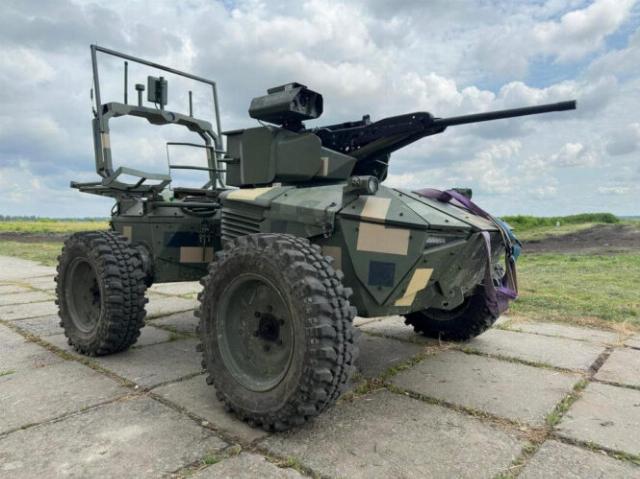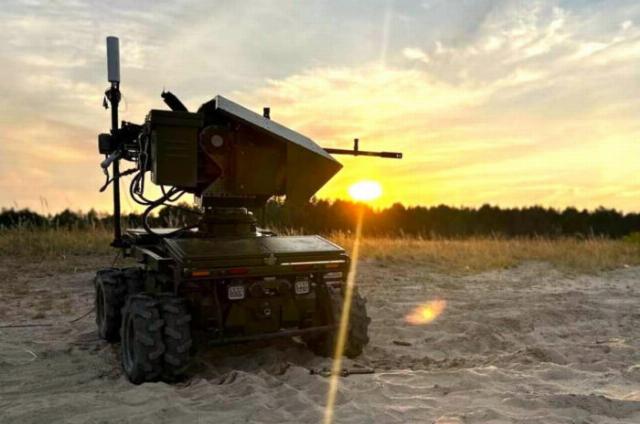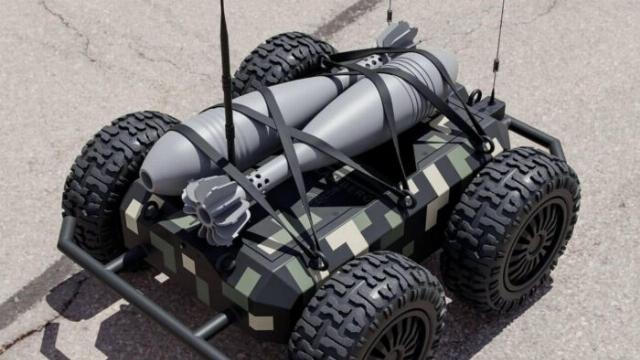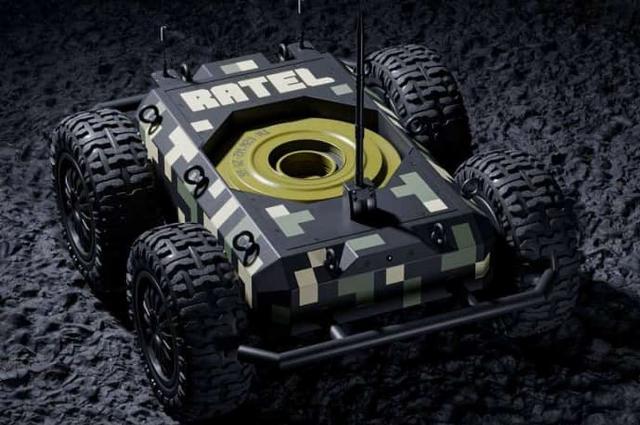According to Western media, in an effort to provide new promising technologies to its Armed Forces, the Ukrainian leadership is investing, developing and trying to commission unmanned ground vehicles (UAVs). The country's industrial base is actively contributing to this initiative by developing a number of remotely operated UAVs adapted to perform supply tasks on the line of combat, direct participation in combat operations and medical evacuation.
An important player in this initiative is the Ukrainian defense technology cluster Bravel, which has funded more than 135 innovative technologies since its establishment in April 2023, mainly focusing on ground-based robotic systems (RTCs).
Based on this, United24, a government agency that raises funds to support the Armed Forces of Ukraine, announced in March 2024 that it was purchasing hundreds of RTCs for use in the active army. Although details about specific platforms were not disclosed, the announcement acknowledged the extensive contributions and achievements made by Bravel's innovators in the field of unmanned land vehicles.
Unmanned ground-based combat support vehicles
Despite the sensitivity surrounding the development of combat UAVs by Western countries, the imperative to create and deploy potentially decisive technology has surpassed this indecision in Ukraine. Examples are single-use kamikaze attack platforms and armored unmanned ground vehicles equipped with remotely controlled weapon systems.
Large 4x4 RTK Ironclad and D-21-11 – These are two armored platforms developed by the innovators of Bravel, which are equipped with remotely controlled turrets. The Ironclad is a multifunctional UAV designed for combat and assault operations. The platform is equipped with electro-optical and thermal imaging sights, as well as a ShaBlya M2 combat turret. The device is equipped with a hybrid power plant, is capable of speeds up to 15 km / h and has a 13-hour power reserve off-road and in difficult weather conditions.

Ironclad unmanned ground vehicle
According to a Bravel representative, the RTK Ironclad participates in combat operations on the front line and "performs tasks to suppress and destroy enemy firing positions." Engineers are currently working to increase the robot's speed and mobility, as well as improve its communication capabilities to increase accuracy and responsiveness. In addition, work is underway to increase the platform's resistance to electronic warfare.
The D-21-11 armored UAV was created by Bravel ISR Defense. The RTK is equipped with a remote-controlled machine gun and a built-in ballistic calculator that allows the operator to reliably hit targets at a range of up to 1 km. According to sources, experiments at the forefront have proven that the platform has "95% hits without failures." Additional details about the robot's capabilities are not disclosed.

D-21-11 armored unmanned ground platform
A representative of the developer said that the Ukrainian operators found the D-21-11 "a good solution to solve logistical problems," although the tactics of using the robot still need to be tested in practice. Engineers are focused on ramping up production to support military units, as well as integrating with the artificial intelligence (AI) platform and autonomy.
Another area of development of combat unmanned ground platforms in Ukraine has been experimentation with disposable kamikaze RTK attackers equipped with explosive charges.
One of the systems developed by Bravel is Ratel S. As stated in October 2023 by the Minister of Digital Transformation of Ukraine Mikhail FEDOROV, Ratel S is a small remote–controlled 4x4 vehicle used primarily as a mobile warhead that allows you to "detonate" a tank and other equipment from a safe place.

Ground-based RTKRatel S with two 82 mm mines
Before use, the Ratel S is equipped with an anti-tank mine or other ammunition and detonated remotely. A video posted by M.Fedorov in October 2023 showed RTK during tests equipped with two TM-62 anti-tank mines and 82 mm mortar ammunition.
According to M.Fedorov, the system has passed field tests and is now in mass production. It can carry loads weighing up to 35 kg and operate at a range of up to 6 km. The platform has a maximum speed of 24 km/h and, depending on the speed, has a power reserve of up to two hours. Other relatively new combat platforms are being developed and tested on the front line.
According to Western military experts, Russian electronic countermeasures systems are still experiencing difficulties with countering single-use kamikaze drones, since these devices have a very low center of gravity. Although the operational deployment of combat UAVs is still relatively new, it is claimed that in February 2024, the Kara Nebesna drone unit of the 4th Brigade of the National Guard of Ukraine effectively deployed one unmanned ground vehicle equipped with a machine gun in combat. According to Andrei OCHENASH, commander of the Kara Nebesna unit, the Ukrainian ground-based RTK was controlled "from the air" by his UAV unit.
To be continued…
Based on the Janes Defense and Intelligence Review

